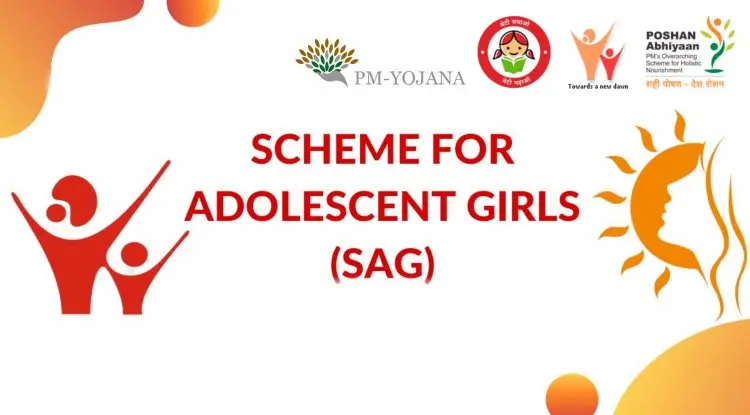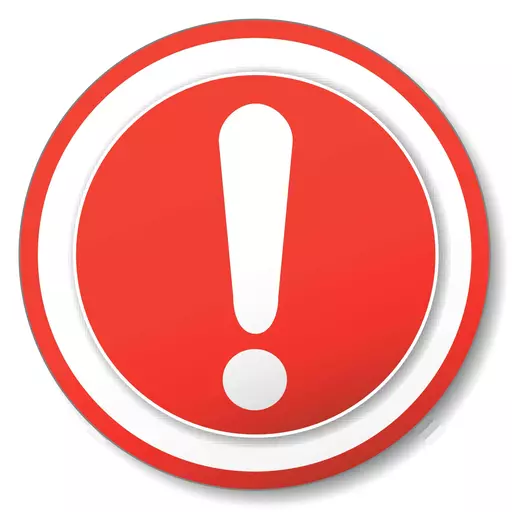Scheme for Adolescent Girls (SAG)
Scheme for Adolescent Girls (SAG) | The scheme was initiated in November, 2010. The scheme is being implemented in all districts of Punjab.

Scheme for Adolescent Girls (SAG)
Scheme for Adolescent Girls (SAG) | The scheme was initiated in November, 2010. The scheme is being implemented in all districts of Punjab.
Scheme for Adolescent Girls (SAG)
scheme for adolescent girls (RGSEAG) or SABLA Scheme 2022 details, nutrition & health services to out of school girls in age group of 11-18 years, complete details here Scheme for Adolescent Girls 2021
Contents [hide]
1 Scheme For Adolescent Girls
1.1 Objectives of Rajiv Gandhi Scheme for Adolescent Girls (RGSEAG)
1.2 सेवाएंServices under SABLA Scheme
1.3 KSY & SABLA Scheme Fund Allocation
1.4 Yogi Adityanath launches scheme for teenage girls in Uttar Pradesh
1.5 Features of UP Scheme for Adolescent Girls (SABLA Yojana)
1.6 Components of the UP RGSEAG Scheme
1.7 Uttar Pradesh Sabla Scheme Coverage
1.8 Scheme for Adolescent Girls (SABLA) – Now in all the districts of Haryana
1.9 Haryana Scheme for Adolescent Girls (RGSEAG)
1.10 Components of Scheme for Adolescent Girls in Haryana
Scheme For Adolescent Girls
The Central Government has expanded and universalized the Rajiv Gandhi Scheme for Empowerment of Adolescent Girls (RGSEAG) or SABLA Scheme. This government scheme will help school girls in the age group of 11-18 years to get proper nutrition and health services. The Sabla scheme is going to replace the existing Nutrition Program for Adolescent Girls (NPAG) and Kishori Shakti Yojana (KSY).
The central government approved the SABLA or RGSEAG scheme in the year 2010 and implemented this scheme in 205 districts. Later in the year 2017-18, the government expanded the scheme to 303 other districts (total -508 districts). Now the central government has made this scheme universal in the remaining districts. Even all the districts of North East (NE) region will also be covered under its phased expansion.
Objectives of Rajiv Gandhi Scheme for Adolescent Girls (RGSEAG)
The main objectives of Sabla Yojana or Rajiv Gandhi Scheme for Adolescent Girls (RGSEAG) are as follows:-
Enable Ag for Self-Development and Empowerment
Improve their nutritional and health status.
Promote awareness of health, hygiene, nutrition, adolescent reproductive and sexual health (ARSH) and family and child care.
Tie up with National Skill Development Program (NSDP) for their home-based skills, life skills upgradation and vocational skills
Adolescent girls out of mainstream school in formal/non-formal education
Provide information/guidance about existing public services like PHCs, CHCs, Post Offices, Banks, Police Stations etc.
Official Notification –Candidates can check the official notification for RGSEAG Scheme by using the link given below
– https://wcd.nic.in/sites/default/files/1-SABLAscheme_0.pdf
-
Services under Sabla Scheme
RGSEAG is a centrally sponsored scheme implemented under Integrated Child Development Services (ICDS) scheme. The AG is to be provided with an integrated package of services which will be as follows
nutritional provision
Iron and Folic Acid (IFA) Supplementation
Health Checkup and Referral Services
Nutrition and Health Education (NHE)
Counseling/guidance on family welfare, ARSH, child care practices and home management
Life skills education and access to public services
Vocational training for girls aged 16 years and above under National Skill Development Program (NSDP)
KSY and Sabla Scheme Fund Allocation
The details of funds allocated under Sabla scheme and KSY data are as follows:-
| Financial Year |
Amount released for Scheme for Adolescent Girls (SAG) |
Amount released for Kishori Shakti Yojana (KSY) |
| 2014-15 | Rs. 61,021.36 lakh | Rs. 1489.05 lakh |
| 2015-16 | Rs. 47,040.57 lakh | Rs 545.56 lakh |
| 2016-17 | Rs. 47,700.06 lakh | Rs. 566.27 lakh |
| 2017-18 | Rs. 33,359.64 lakh | Rs. 464.71 lakh |
The above figures have been given by the Minister of State for Women and Child Development, Dr. Virendra Kumar in the Rajya Sabha.
Yogi Adityanath launches scheme for teenage girls in Uttar Pradesh
CM Yogi Adityanath has launched the scheme (SABLA) for adolescent girls in the state of Uttar Pradesh on 21st February 2019. The main objective of this Sabla scheme is to take care of the education of girls in the age group of 11 to 14 years up to graduation level. The UP state government is going to ensure proper nutrition and special assistance for the girls who have left their studies.
UP Chief Minister Yogi Adityanath has also decided to observe 8th of every month as Kishore Balika Diwas at Anganwadi centers across the state.
Features of UP Scheme for Adolescent Girls (SABLA Yojana)
The Government of Uttar Pradesh has launched Scheme for Adolescent Girls (SABLA) to look after the education of girls who drop out between the age of 11 to 14 years. The overarching objective of this Sabla scheme in UP is to improve nutrition, health and development status, promote awareness about health, hygiene, nutrition and family care. In addition, the Sabla scheme will also provide them opportunities to learn life skills, go back to schools, gain a better understanding of the social environment and take initiatives to become productive members of the society.
Components of UP RGSEAG Scheme
There are 2 major components under the Scheme for Adolescent Girls (SABLA), i.e. nutritional component and non-nutritional component. The details of 2 components of Sabla scheme are as follows:-
Nutritional component – All out-of-school girls between the ages of 11 and 14 can take home rations or hot cooked meals. There is a nutritional provision of Rs 9.50 per day which includes 600 calories with 18-20 grams of protein and recommended daily intake of micronutrients per day.
Non-nutrition component – IAS supplement, health check-up and referral services, nutrition and health education (NHE), counseling/guidance on family welfare, ARSH, child care practices, life skills education and outreach for all girls out of school Huh. Public services 2-3 times a week.
Uttar Pradesh Sabla Scheme Coverage
The Scheme for Adolescent Girls in Uttar Pradesh (SABLA) will cover all out-of-school girls in the age group of 11 to 14 years. The SABLA scheme was approved by the central government in the financial year 2010 and is already implemented in 205 districts across the country. Subsequently, the government has expanded and universalized the Sabla scheme in additional 303 districts in a phase-wise manner.
Scheme for Adolescent Girls (SABLA) – Now in all districts of Haryana
Haryana Government is going to implement Scheme for Adolescent Girls (SABLA) in all the districts of the state. The scheme will facilitate the education and empowerment of out-of-school adolescent girls in the age group of 11-14 years. To completely replace Kishori Shakti Yojana (KSY), the government will implement this scheme through Anganwadi centers under the umbrella of Integrated Child Development Services (ICDS). Earlier, Sabla scheme was named as Rajiv Gandhi Scheme for Empowerment of Adolescent Girls (RGSEAG).
Initially, SABLA was implemented on pilot basis in 6 districts namely Ambala, Yamunanagar, Rohtak, Rewari, Kaithal and Hisar. Now, the state government has decided to expand the coverage and scope to all the districts. All the District Program Officers (DPOs) will conduct the baseline survey, identify the beneficiaries and then submit their report to the Union Ministry of Women and Child Development to give an accurate report for receiving the funds.
Haryana Scheme for Adolescent Girls (RGSEAG)
The important features and salient features of Sabla scheme are as follows:-
This primary objective of this scheme is to educate and empower out-of-school girls to make them self-reliant and create awareness.
Special emphasis will be laid on providing self-employment opportunities along with improving their nutritional and health status.
The scheme also includes promotion of awareness about aspects of health and nutrition. The government will also provide supplementary nutrition to these girls.
The government will support "out-of-school adolescent girls" to transition back to formal schooling. In addition, these girls will be entitled to receive skill development training to upgrade their home-based skills, life skills and create awareness on socio-legal issues.
Adolescent girls will get all the necessary information. On various existing public services like Primary Health Center (PHC), Community Health Center (CHC), Post Office, Banks and Police Stations.
All school girls in the age group of 11 to 14 years are eligible for this scheme.
The scheme for adolescent girls will be implemented through Anganwadi Centers (AWCs) under Integrated Child Development Services.
Components of Scheme for Adolescent Girls in Haryana
This scheme now has 2 components – Nutrition and Non-Nutrition whose details are given below:-
Nutritional Components:
All the adolescent girls registered under this scheme will get the supplementary nutrition given to pregnant women and lactating mothers under ICDS.
This scheme will ensure that every girl child gets nutritious food of 600 calories, 18-20 grams of protein and micronutrients for at least 300 days in a year.
The government will also provide the facility of Take Home Ration (THR) or Hot Cooked Meal (HCM) as far as possible.
For hot cooked food, all quality parameters will be taken into account. The government will spend Rs 9.5 per day per beneficiary for about 300 days in a year.
The Central Government and Haryana Government will bear the cost of supplementary nutrition in the ratio of 50:50.
Non-nutritional components:
This component will focus on motivating school girls in the age group of 11 to 14 years to get back to education. In addition, the State Govt. Will also motivate them to return to formal schooling or seek skill training.
In addition, the government will also provide counseling/guidance to these girls to access iron-folic acid (IFA) supplementation, regular health check-ups, referral services, nutrition and health education, life skills education, public services.
To successfully implement this scheme, the government will provide an amount of 1.1 lakh/project to the concerned departments.
The ICDS Monitoring Committee will monitor and review the progress of the scheme. These committees are also responsible for suggesting suitable mechanisms to improve the implementation process.
The Haryana Government has kept in mind the physical, physiological and health needs of adolescent girls while designing the services.







